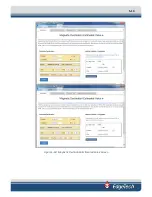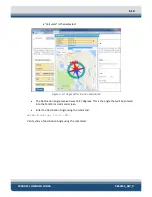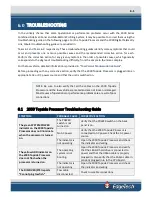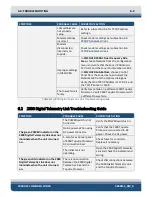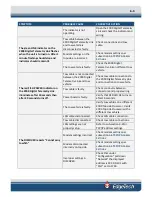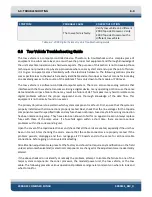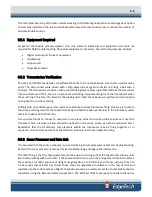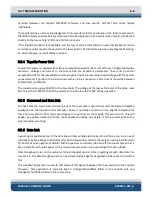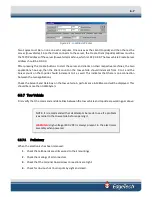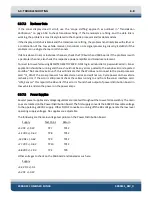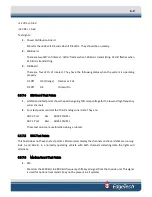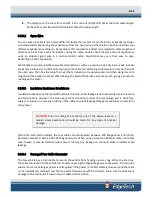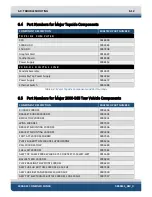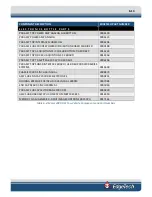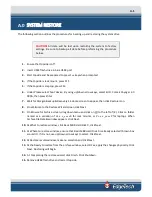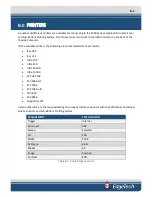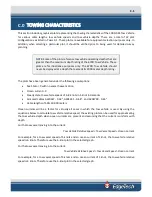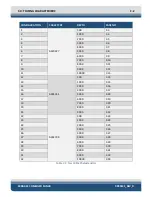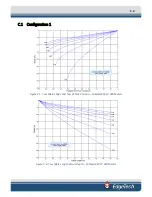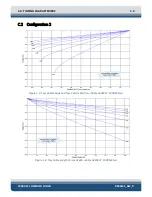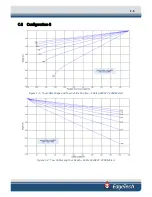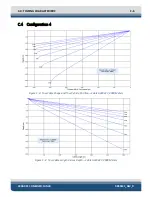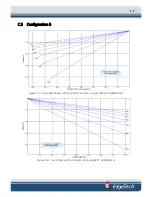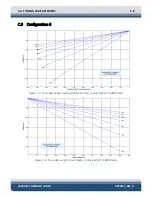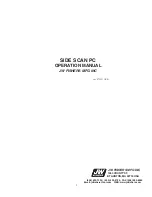
6-11
8.
The distance to the short from end #1 is the ratio of (R1/R1+R2) times the total cable length.
Recheck from end #2 which is (R2/R1+R2) times the cable length.
6.3.8.2
Open Wire
An open wire in a cable is much more difficult to locate than a short circuit; therefore, a capacitance bridge
is recommended. Measuring the capacitance from the open wire to the shield on both ends allows two
different capacitance readings to be recorded. This represents a direct ratio related to cable length and
distance of break from each end. Before cutting the cable, double-check the same ratio of capacitance
using an adjacent good wire in a multi-conductor cable. Capacitance may vary from wire to wire,
depending on their separation.
Most breaks occur around the tow cable termination or where a previous repair has been made. A cable
break may be found or confirmed by laying out the cable and attaching an ohmmeter across each end of
the open wire. Then flex the cable first near the termination or repaired section and then along its entire
length until the break is reached. When flexing, the ends of the broken wire may touch, giving a continuity
reading on the meter.
6.3.8.3
Insulation Resistance Breakdown
Insulation breakdown is the most difficult fault to locate. Cable leakage is not necessarily located near the
end terminations. However, the area near each termination receives the most abuse and is, therefore,
subject to suspicion. Successive cutting of the cable end until leakage disappears will prove successful in
many cases.
CAUTION!
Prior to cutting the cable for any of the above reasons, a
careful visual examination should be made for any signs of physical
damage.
With both ends disconnected, the tow cables should measure between 100 Mega-ohms and infinity
between conductors with a 500 VDC Meg ohmmeter. When using a Simpson 260 Multi-meter, all cables
wire-to-wire or wire-to-shield should measure infinity. Any leakage on the multi-meter indicates cable
leakage.
6.3.8.4
Damaged Tow Cable Connector
The tow vehicle has a trip line that prevents the vehicle from hanging up on a snag. When the line trips,
the cable connection to the vehicle disconnects exposing the high voltage pins to seawater. Pin corrosion
will start to occur as long as power is still applied. If the power is not immediately removed, and the cable
is not immediately retrieved and the connector flushed out with fresh water, there may be permanent
damage to the connector. This will require cable re-termination.
Summary of Contents for 2000-DSS
Page 20: ......
Page 56: ...Figure 4 2 2000 Digital Telemetry Link Electronics Block Diagram...
Page 57: ...Figure 4 3 2000 Digital Telemetry Link Wiring Diagram...
Page 59: ...Figure 4 4 Tow Vehicle Electronic Block Diagram...
Page 60: ...Figure 4 5 Tow Vehicle Interconnect Drawing...
Page 63: ...Figure 4 6 Armored Cable PMI Grip Unterminated Topside...
Page 64: ...Figure 4 7 Test Cable...
Page 77: ...5 13 Figure 5 16 Magnetic Declination Estimated Value Screen...
Page 79: ...5 15 getDeclination CR Figure 5 18...
Page 80: ......
Page 94: ......
Page 96: ......
Page 98: ......

